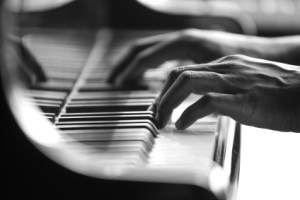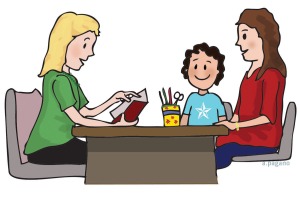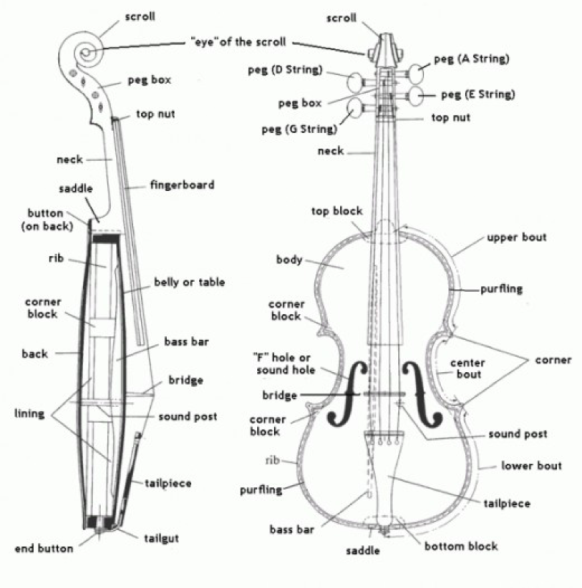At Christmas you send a treat to school for your kids’ teacher(s). At the end of the year maybe you send a gift too. But what about all the other days? Sure, some schools have teacher appreciation week, and that’s great, but that is only one week out of nine months. Teachers have a lot to do between writing lesson plans, keeping up with grades, parent teacher conferences, any extra curricular activities that they may run, etc., etc. On top of the regular things many teachers have to do music teachers also have to keep their music library organized, run logistics for concerts, write up concert programs, plan trips and festivals, manage their specialized classroom equipment, and more. A little “proper care and feeding” can go a LONG way to helping a music teacher. Below find some suggestions of ways you can properly care and feed your music teacher:
- Create a booster group of parents. The most effective booster groups I have seen have had a president to delegate responsibilities and the support of vice presidents or committees to run things such as transportation, uniforms, music library, equipment (stands, chairs, amps, tuners, etc.), instruments, chaperones, concert logistics, fundraisers, and anything else the music teacher is willing/able to delegat
 e.
e. - Volunteer to help with accompaniment. Choir teachers especially need assistance with this. It is incredibly difficult to teach from behind a piano. If your choir teacher is willing to let you help out and you can play the piano volunteer to do so. It takes a huge load off the teacher when they don’t have to learn the piano music to performance quality and when they can teach without having to hide behind the piano, it is much easier to manage students when you are directly in front of them
- Volunteer to chaperone. Most music programs attend festivals and in high school go on trips or travel with sports teams. Often school districts require a certain ratio of adults to students and it is incredibly helpful to have a pool of parents to choose from rather than having to hunt down chaperones at the last minute.
 Help with fundraising. School fundraisers can be obnoxious, who wants another roll of wrapping paper or a giant tin of stale popcorn? Help your music teacher come up with creative ways to help raise funds whether they be to help your child pay a fee, for a trip, or to purchase new equipment. Also, be willing to help with any established fund raisers– sit at the football concessions stand, take your kid’s third cookie dough order to work, sell those coupon books to your poker buddies… It shows the music teacher and your kid that you care.
Help with fundraising. School fundraisers can be obnoxious, who wants another roll of wrapping paper or a giant tin of stale popcorn? Help your music teacher come up with creative ways to help raise funds whether they be to help your child pay a fee, for a trip, or to purchase new equipment. Also, be willing to help with any established fund raisers– sit at the football concessions stand, take your kid’s third cookie dough order to work, sell those coupon books to your poker buddies… It shows the music teacher and your kid that you care.- On that note, be an advocate for the music classes in other parent organizations and meetings. If the PTA has recently put on a fundraiser and is trying to figure out where to use the money, suggest the music program. Music classrooms almost always need something, instrument repairs, piano tuning, music stands, music, chairs, new instruments… the list goes on. Advocate for the music program and it will certainly pay off with a better education for your kids.
- Attend concerts! If your kid is in a sport you’d do anything in your power to attend their games, you should do the same for performing groups. Also advertise for concerts, musicals, and other performances, brag to your friends, family, distant relatives, and coworkers about the hard work your kid (and their teachers) have put into this and encourage others to attend. Lastly, when you do attend be the best audience member you can be– put your cell phone away, applaud loudly, and let the kids and teacher know that you recognize their hard work, no matter how young the kids may be (and how difficult the concert may have been to sit through). Your kids will thank you and the teacher(s) will too.
- Get your kids to lessons and rehearsals on time!
- Enroll your kids in private lessons. Most music teachers have their hands super full! Think about it, music classes are often larger than a regular class, plus orchestras and bands put noisemakers into those kids’ hands then ask them to only make noise with them when instructed. Managing that situation is HARD WORK! Unfortunately many kids struggle and that one teacher doesn’t have the time or resources to help each kid with their individual struggles, they can address general issues, but that often doesn’t help. The number one reason kids quit music classes is because they struggled with it, it is hard, they don’t find success, and then it isn’t fun. Even a once a month one-on-one lesson with someone who specializes in their instrument or voice can make a hug difference in the amount of success a child has in music. If you think private lessons aren’t something you can afford call a local teacher and talk to them, many are more than willing to work with whatever you can afford or fit into your busy schedule. (to show their appreciation for you enrolling kids in private lessons most teachers offer some kind of incentive for them, such as extra credit, or letter points)
- If you have a problem with the teacher take it up with them personally. So much can be misconstrued over
 email or phone. Set up a meeting with the teacher and keep the meeting. Be civil and realize that you (most likely) didn’t study music education in college nor are you aware of the specifics of the classroom environment, school and district rules, and other factors. Don’t accuse a teacher of making mistakes without first investigating the situation or being willing to help come up with a solution.
email or phone. Set up a meeting with the teacher and keep the meeting. Be civil and realize that you (most likely) didn’t study music education in college nor are you aware of the specifics of the classroom environment, school and district rules, and other factors. Don’t accuse a teacher of making mistakes without first investigating the situation or being willing to help come up with a solution. - Make your kids practice! You wouldn’t allow your kids get away without doing their math homework, or science homework, or history homework, so why do you let them get away without studying for their music class? Having your kids practice tells your music teacher that you appreciate and value the subject and knowledge they are trying to impart to your kids.
- Visit your music teacher during parent-teacher conferences. Chances are they don’t have a line because most kids get a decent grade in music and if they aren’t parents just don’t seem to care as much. But chances also are that the music teacher knows your kid better than their other teachers and can probably give you insight into why your child is failing math or sluffing Spanish, plus it will relieve their boredom.
Music teachers are people too! Just like everyone else they have a lot going on, but unlike most other teachers they have more to manage than lesson plans and a classroom. Give them a hand and you will see the immense benefits in your child’s musical education and experiences. There’s always something you can do to help support your child’s musical education, if you don’t know what you can do just ask.
Thank you to all my friends who helped me write this post. If you are a music teacher and don’t see something that has helped you here share it in the comments!





